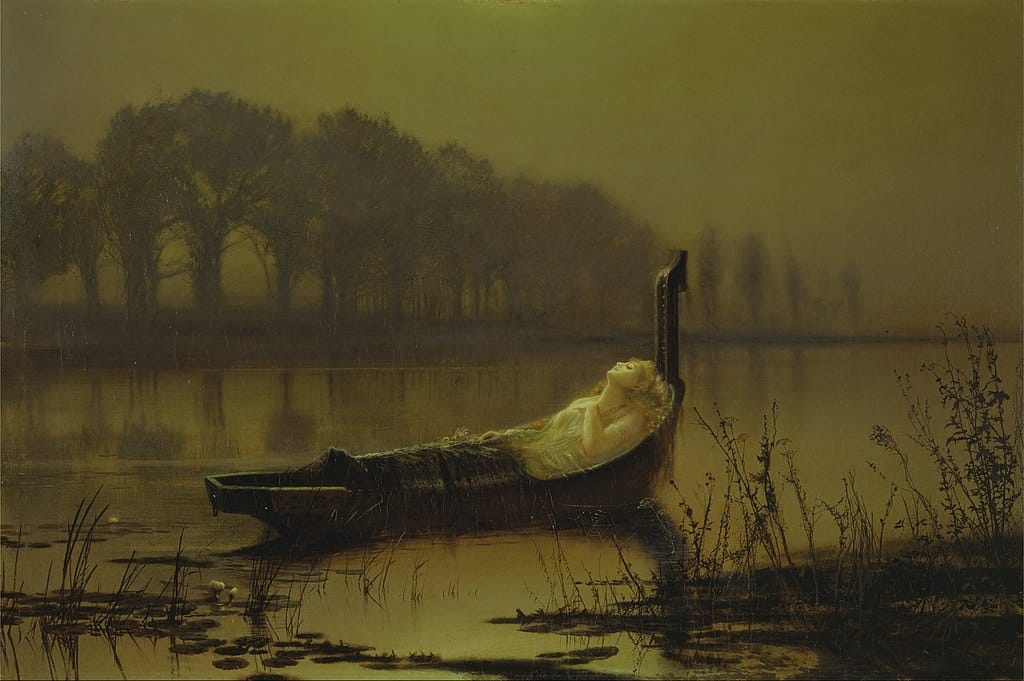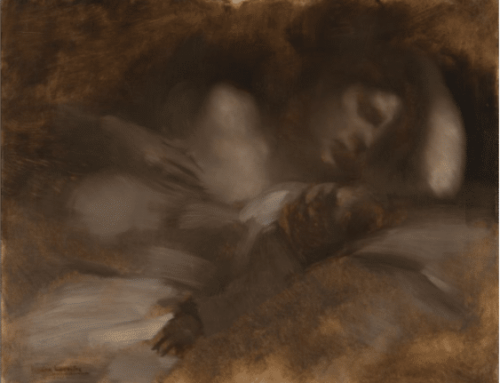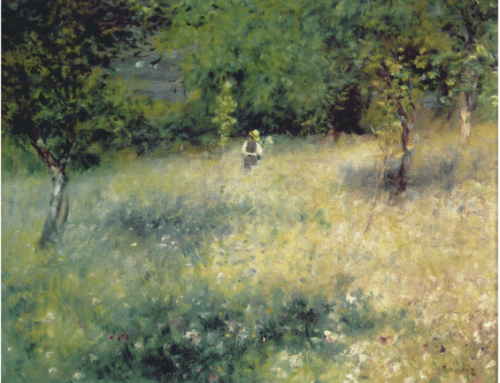The Lady of Shalott is a poem by 19th-century English poet Alfred Tennyson, one of Victorian high society’s most popular authors in any genre.
The poem tells the tragic story of a young noblewoman stranded in a tower up the river from Camelot, the fabled castle of the legendary King Arthur.
Other than the book-length lyric poems of classical Greece and Rome, poetry generally didn’t provide subject-matter for paintings with anything like the frequency that it did during the latter half of the 19th century. For a while, it wasn’t unusual for a painter like JMW Turner or the American landscapist George Inness to include a verse or two of original poetry along with their pictures. It was only during that brief window of time, roughly between 1850 and 1913, that real hosts of painters pictured the subject matter of poetry on canvas.

Sidney Harold Meteyare, I Am Half Sick with Shadows, oil, 30 x 45 inches, 1913
With a work like Tennyson’s Lady of Shalott (pronounced Sha-LOTT, emphasis on the second syllable), it’s not hard to see why. The poem beguiles with a dreamy medieval romanticism and enigmatic symbolism. This, along with the poem’s Arthurian imagery and musical, melancholy tone, has inspired a number of truly gorgeous paintings, full of interest and feeling, which any art lover should know.
Here we pair a few strains from the poem with a selection of the art in homage to The Lady.
Imprisoned in “four grey walls, and four grey towers” …
There she weaves by night and day
A magic web with colors gay.
She has heard a whisper say,
A curse is on her if she stay
To look down to Camelot.
She knows not what the curse may be,
And so she weaveth steadily,
And little other care hath she,
The Lady of Shalott.
And moving thro' a mirror clear
That hangs before her all the year,
Shadows of the world appear.
There she sees the highway near
Winding down to Camelot:
There the river eddy whirls.
But in her web she still delights
To weave the mirror’s magic sights,
For often thro’ the silent nights
A funeral, with plumes and lights
And music, came from Camelot:
And sometimes through the mirror blue
The knights come riding two and two.All in the blue unclouded weather
Thick-jewell'd shone the saddle-leather,
The helmet and the helmet-feather
Burn'd like one burning flame together.
Or when the moon was overhead
Came two young lovers lately wed;
'I am half sick of shadows,' said
The Lady of Shalott.
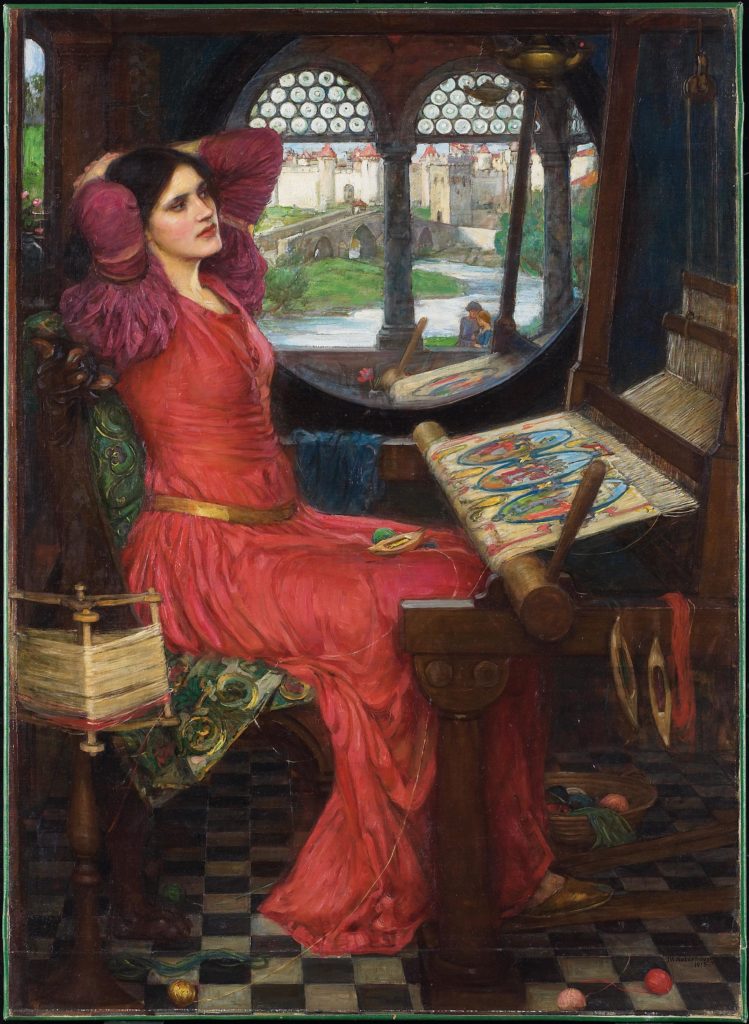
John William Waterhouse, “I am half sick of shadows,” sad the Lady of Shalott, 1915
She left the web, she left the loom,
She made three paces through the room,
She saw the water-lily bloom,
She saw the helmet and the plume,
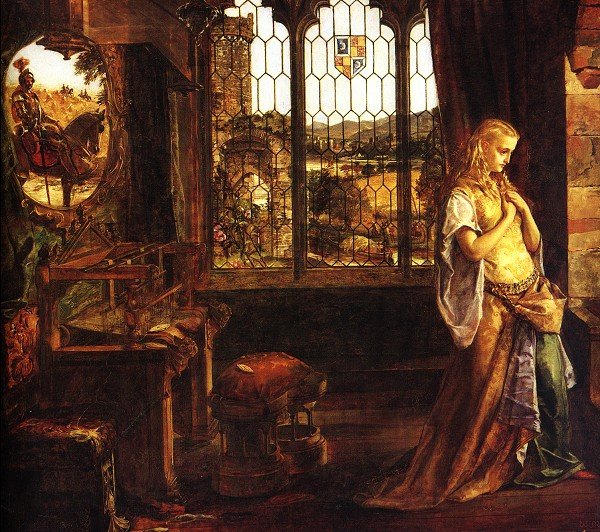
William Maw Egley, The Lady of Shalott, 1858 “She left the web, she left the loom”
She look’d down to Camelot.
Out flew the web and floated wide;
The mirror crack’d from side to side;
“The curse is come upon me,” cried
The Lady of Shalott.”
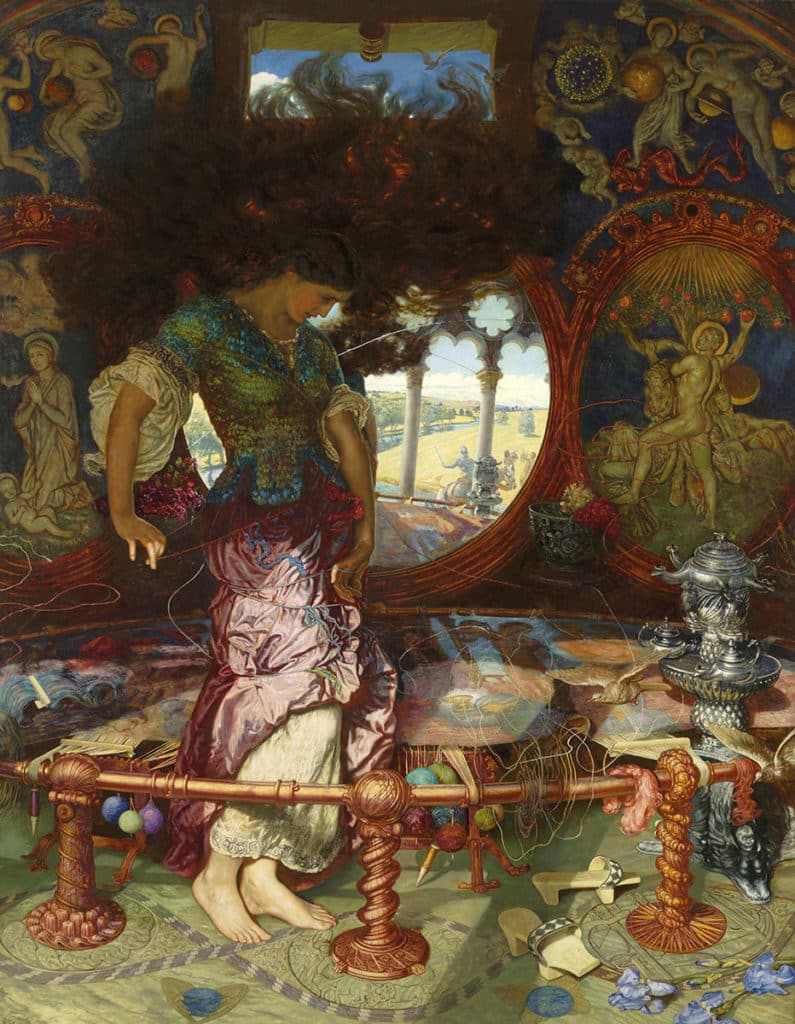
William Holman Hunt, The Lady of Shalott, 1889
“Who is this? And what is here?”
And in the lighted palace near
Died the sound of royal cheer;
And they crossed themselves for fear,
All the Knights at Camelot;
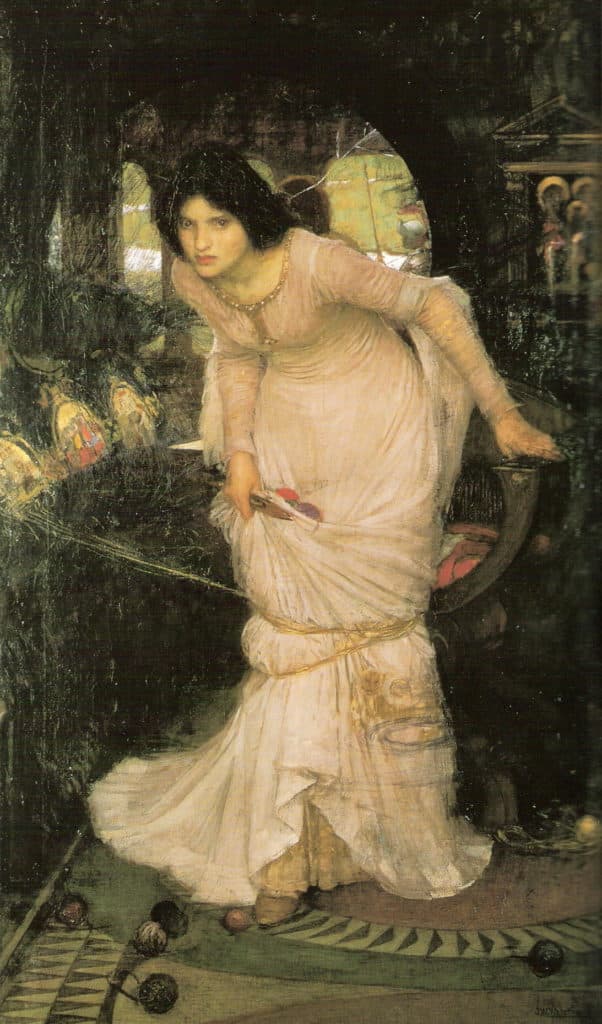
But Lancelot mused a little space
He said, “She has a lovely face;
God in his mercy lend her grace,
The Lady of Shalott.
…
And down the river’s dim expanse
Like some bold seer in a trance,
Seeing all his own mischance —
With a glassy countenance
Did she look to Camelot.
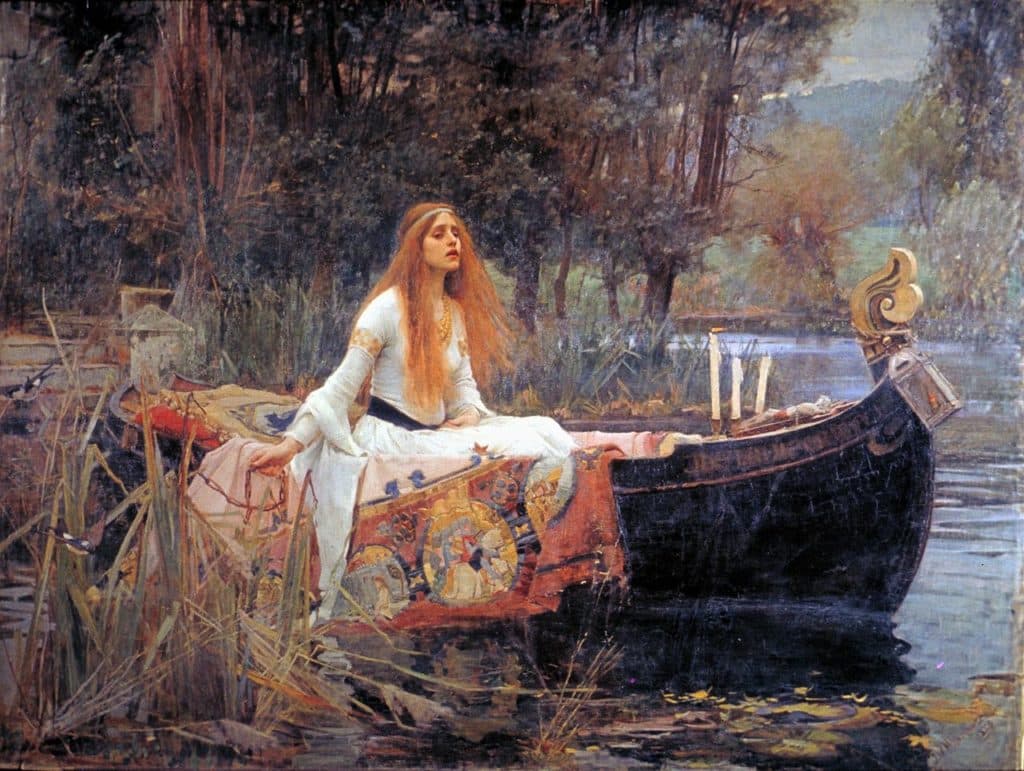
And at the closing of the day
She loosed the chain, and down she lay;
The broad stream bore her far away,
The Lady of Shalott.
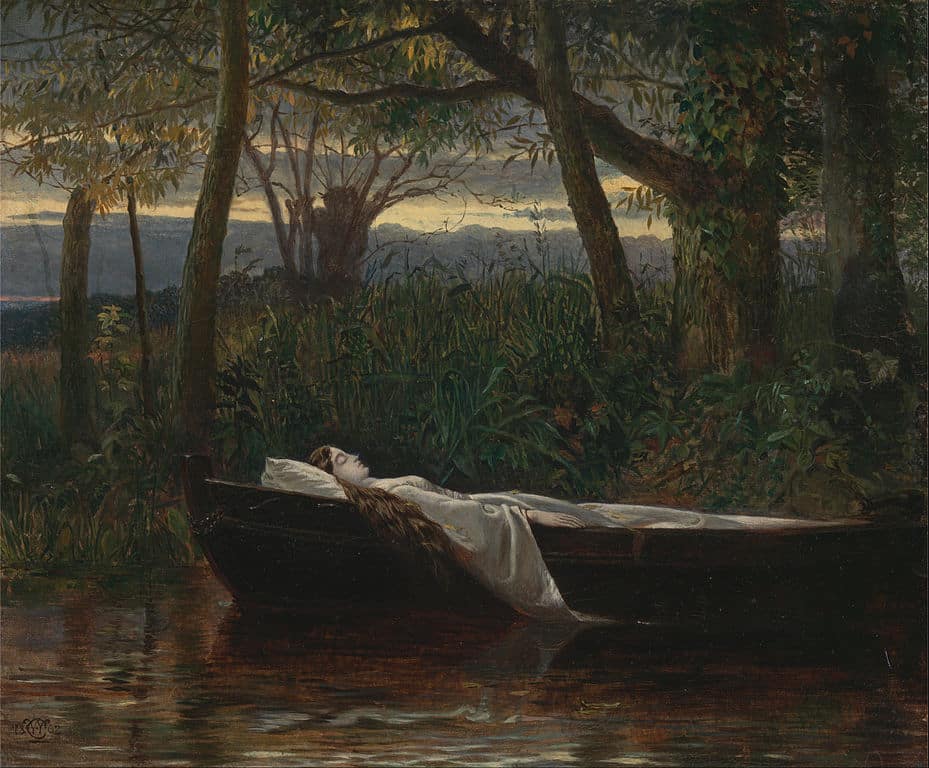
Walter Crane, The Lady of Shalott, 1862

Arthur Hughes, The Lady of Shalott
Lying, robed in snowy white
That loosely flew to left and right–
The leaves upon her falling light–
Through the noises of the night
She floated down to Camelot:
And as the boat-head wound along
The willowy hills and fields among,
They heard her singing her last song,
The Lady of Shalott.
And by the moon the reaper weary,
Piling sheaves in uplands airy,
Listening, whispers, “‘Tis the fairy
Lady of Shalott.”
For the whole text of the poem and a brilliant feminist reading of the poem, go here. It points out that in imagery of the Lady of Shalott imprisoned and shut off from life, becoming entangled in the threads of her wearing, resonates with the plight of the woman artist, and women in general, during the time period.
Water Works
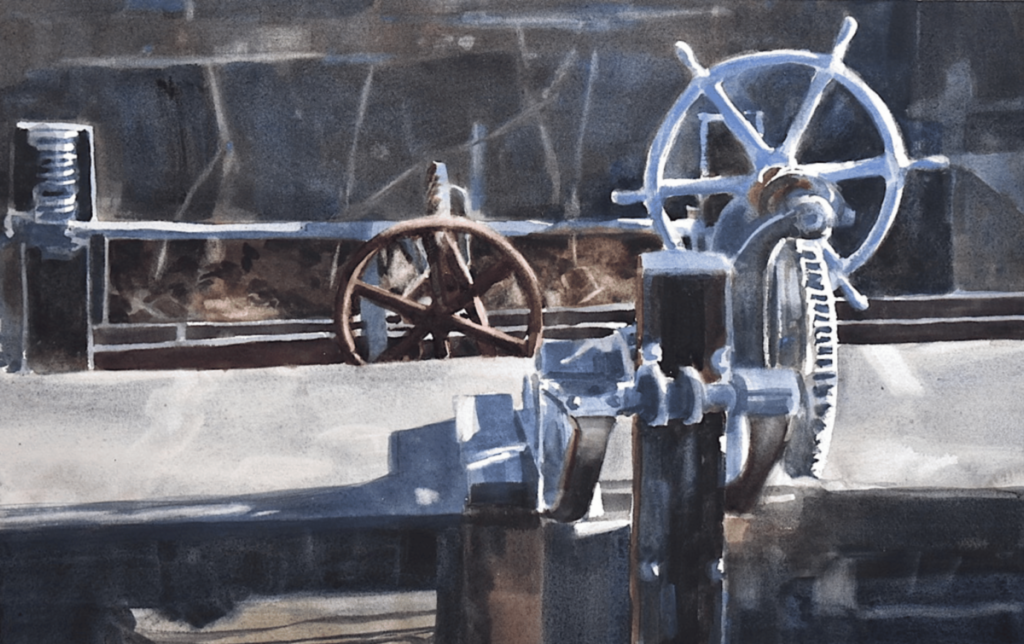
Sarah Yeoman, Paper Mill Gears, watercolor, 11×14 inches
Sarah Yeoman’s watercolor painting, Paper Mill Gears (above) combines a complex composition with a strong sense of pictorial space (achieved by varying degrees of soft and sharp focus, i.e. “lost” and hard edges). At the same time it offers an interesting juxtaposition of old and dusty/rusty tech and the bright flush of fresh air and sunlight.
Sarah will be one of the many master watercolorists serving as faculty during Watercolor Live, a rare three-day all online immersion in learning from some of the top watercolor painters in the country, January 26 – 28, 2023. Read all about it right here.

